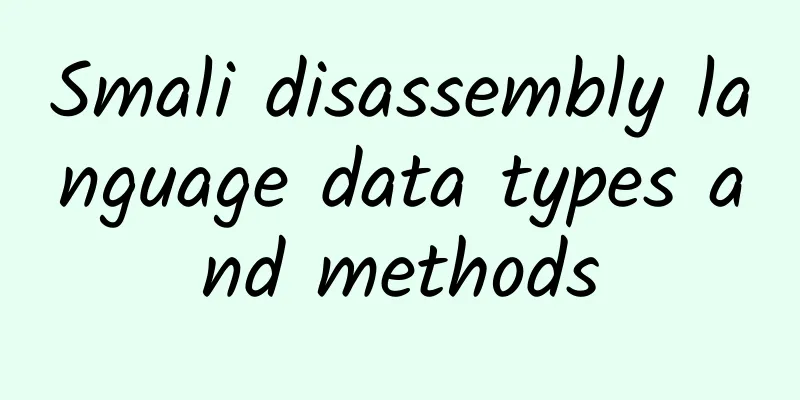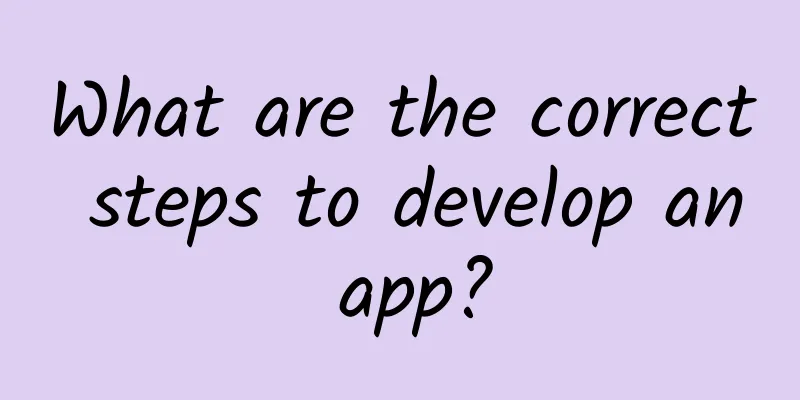Smali disassembly language data types and methods

Introduction to SmaliSmali is a disassembly language for Android applications that converts the Dalvik bytecode of an Android application into an easy-to-read and edit text format. Using Smali, developers can view and modify the inner workings of Android applications for debugging and analysis. Smali code is often used to locate and fix problems in applications, or for reverse engineering. Smali Data TypesIn the Smali language, data types include the following:
In the Smali language, each data type has corresponding instructions and operators to operate and process it.
Smali code instructionsSmali code can be obtained by compiling Java source code into Dalvik bytecode and then disassembling it. Smali code example: The above is a simple Smali method that implements the function of adding two constants and returning the result. Some common Smali instruction examples:
These are just a few examples of Smali instructions. The Smali language covers various operations of the Dalvik virtual machine and is used to describe various behaviors and logic of Android applications. Smali Examples The above code represents a static method named main, which accepts a String array as a parameter and returns a void type. In the method, the string "Hello, World!" is first stored in register v0, then the System.out object is obtained and the println method is called with the string (Hello, World!) in v0 as a parameter for output. Finally, the void type is returned. |
<<: More modern image format WebP usage and conversion
>>: Android uses JobScheduler to perform background tasks
Recommend
People who talk about the impact of Trump's "election" on the auto industry
Since the US presidential election began on Novem...
New methods of selling products through live streaming in 2020, strategies for selling products through short videos!
In 2019, "Li Jiaqi" and "Viya&quo...
If you take a sip of milk tea like this, you are also inhaling this chemical substance that will not degrade for hundreds of years | Expo Daily
If you take a sip of milk tea like this, you also...
How much does it cost to customize a health care product mini program in Yongzhou?
According to industry insiders, mini programs wil...
Do metals have "memory"?
Let’s watch a magic show first. The magician plac...
Summary of 8 years of operation practice, the core keywords of the operation knowledge system (with PPT and mind map download)
The Internet is an industry where you have to com...
A mathematical genius who cracked the German code during World War II took the secret with him
Code breaking played a key role in the war. Swedi...
The Three Kingdoms’ annual drama: Lost on Journey: Xu Jiong!
Mixed Knowledge Specialized in treating misunders...
Tips for using the URL displayed in Baidu search promotion!
Tips for using display URL The display URL is the...
How to master fan circle marketing?
The "2018 White Paper on Chinese Youth Socia...
How to master festival brand marketing?
Taking Master Kong’s Father’s Day marketing campa...
How much does it cost to develop the Changde Shoes and Boots mini program? How much is the price for developing a Changde shoe and boots mini program?
How much is the quotation for Changde footwear de...
Kuaishou director teaches: Playing short videos, ordinary people can also earn more than 10,000 yuan a month
"Ordinary people can also earn over 10,000 y...
The mobile phone "nuclear war" is not over yet
Once upon a time, when we bought mobile phones an...
Review of marketing planning cases and the cool advertising in 2019!
• Introduction• "It's fun to be silly fo...









